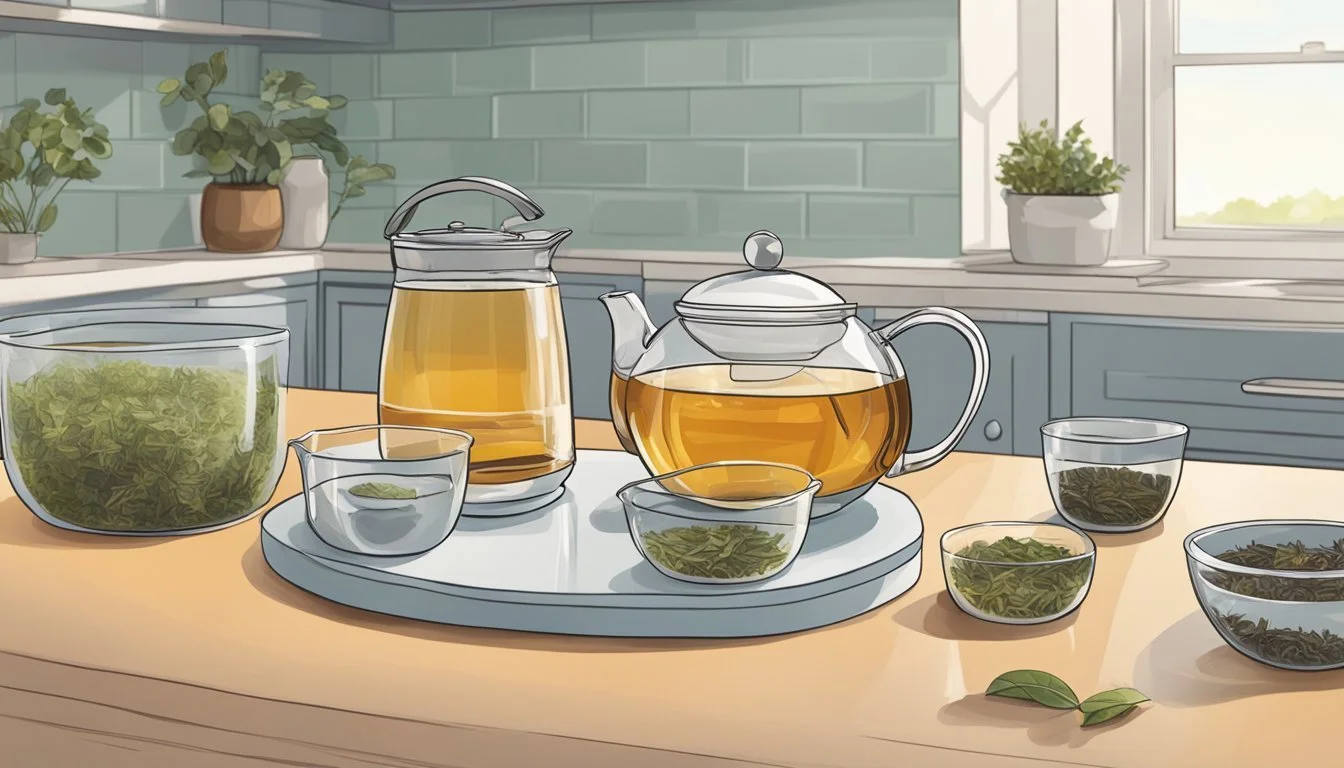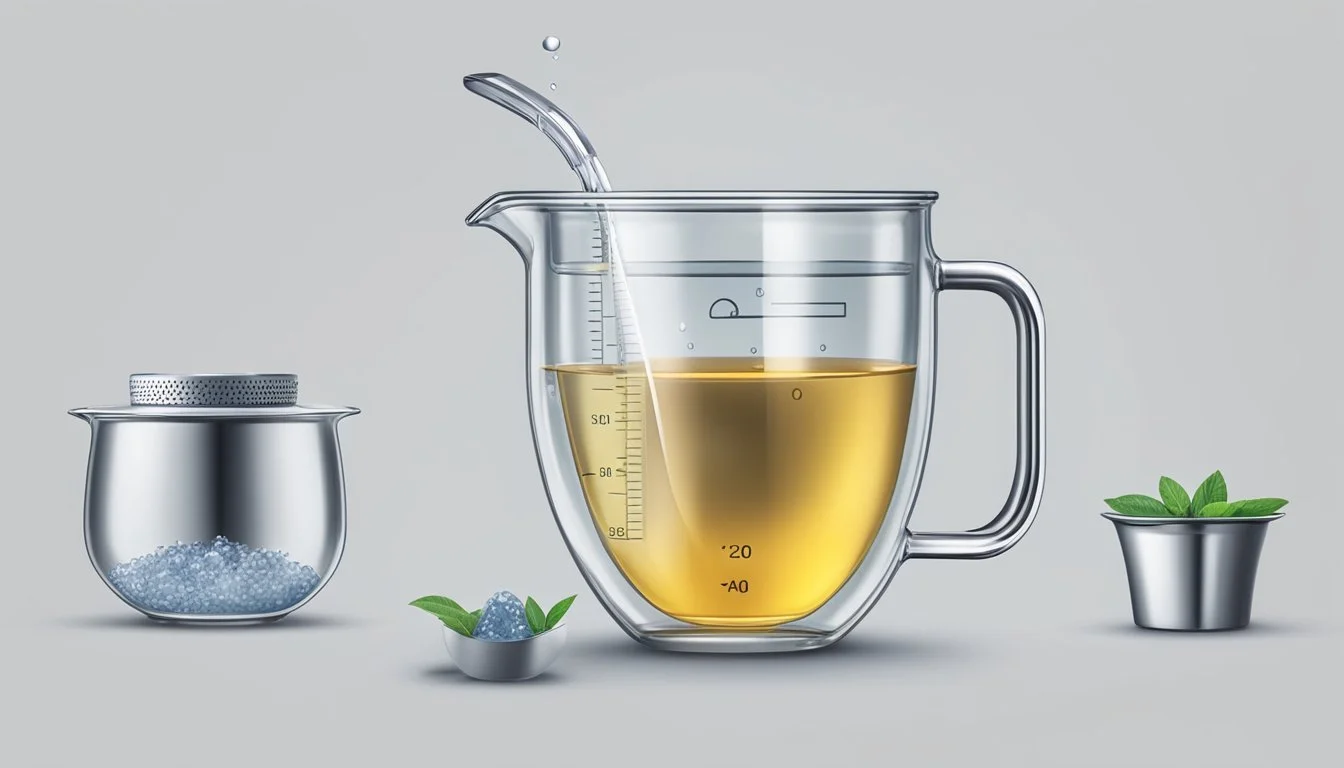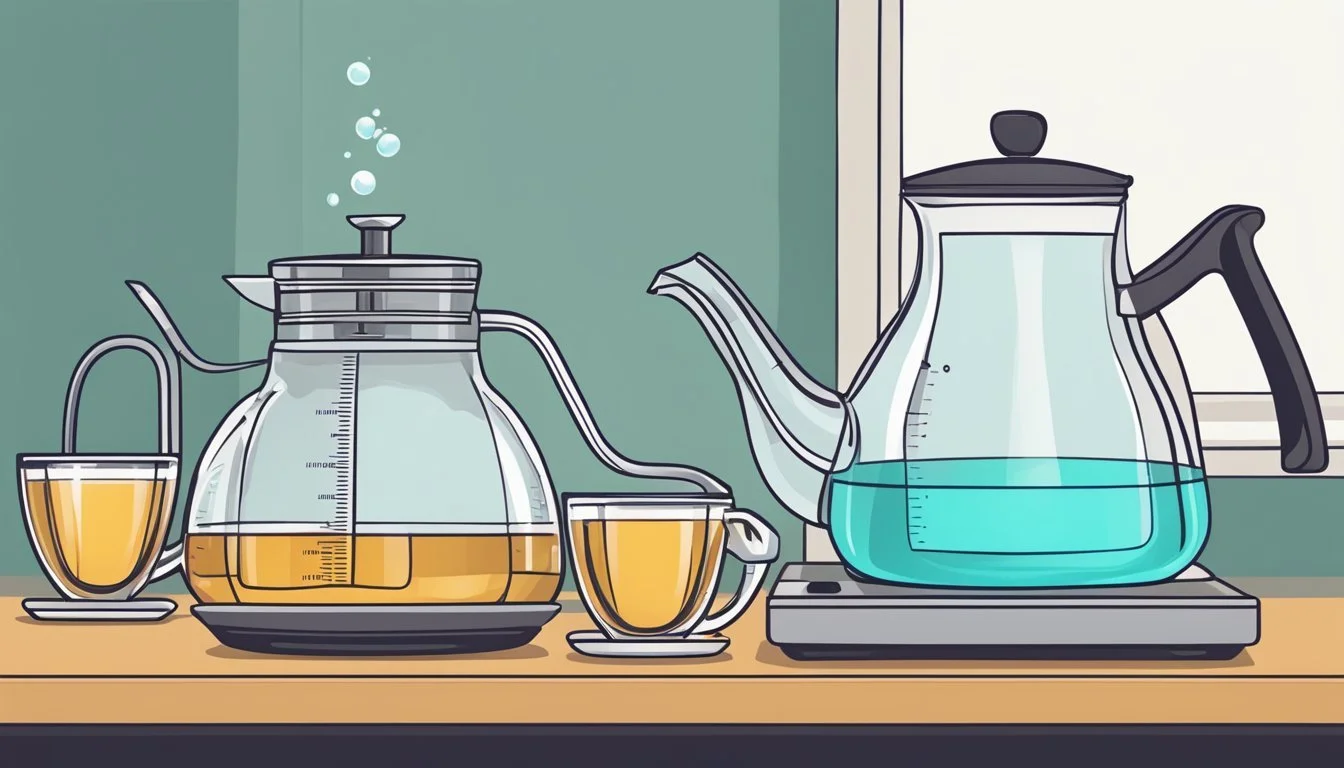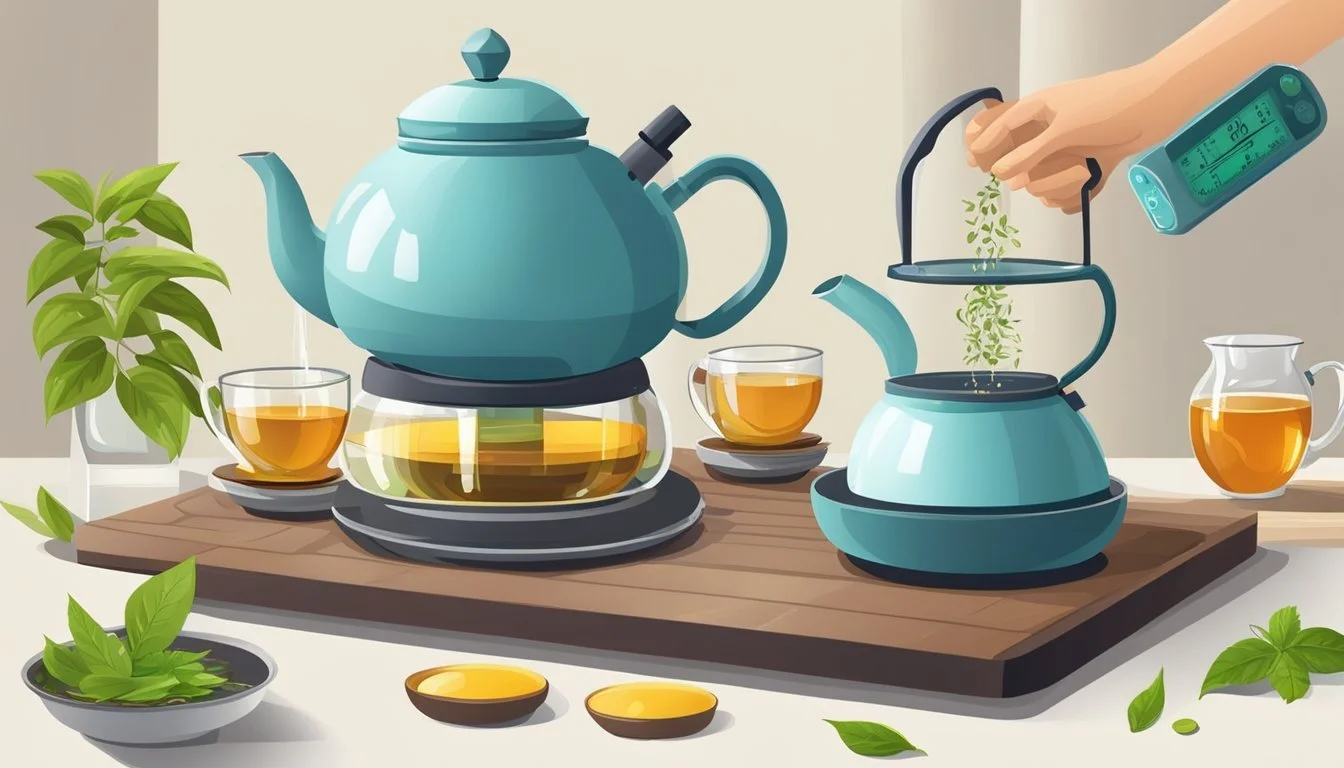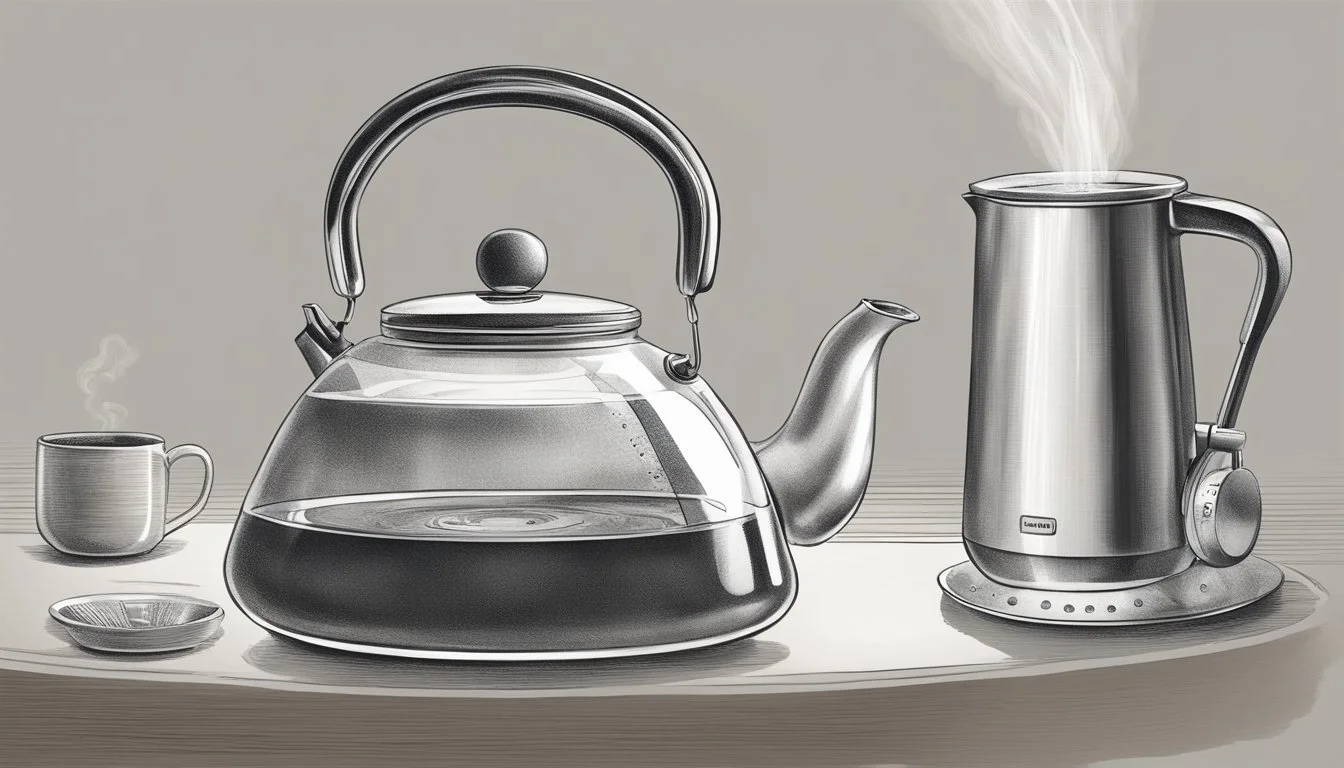How to Measure the Right Amount of Water for Brewing Tea
A Precise Guide
Brewing tea is both an art and a science, requiring attention to detail to achieve the perfect cup. The art of tea making involves the careful balance of tea leaves and water, with the quantity of water playing a crucial role in extracting the flavors and aromas of the leaves. It is not just about the ratio, but also about the temperature and the contact time, which can dramatically alter the taste of the final brew.
The process begins with measuring the right amount of water, which depends on the type of tea being brewed. Each variety of tea, from delicate white teas to robust black teas, requires specific water temperatures and volumes to fully release its unique profile. The measure of water ensures that the tea is neither too strong nor too diluted, striking a balance that is pleasing to the palate.
Moreover, water is not just a solvent in this process; it is a contributor to the overall sensory experience. The purity and temperature of the water interact with the tea leaves, influencing the rate and nature of the extraction. Precision in water measurement assures that the brewing parameters set forth for each tea type are met, ensuring a consistent and enjoyable tea experience with every cup.
Understanding Tea Types and Preferences
When measuring water for brewing tea, the type of tea and individual taste preferences play crucial roles in achieving the perfect cup.
Different Types of Tea
Black Tea: Often robust in flavor, black tea is best brewed with water at a temperature range of 200-212°F for a period of 3-5 minutes. This tea type is known for its boldness in both flavor and aroma, creating a strong tea preferred by many.
Green Tea: Delicately flavored, green tea should be brewed at cooler temperatures of 175-185°F and steeped for just 1-3 minutes to preserve its subtle flavors and prevent bitterness.
Oolong Tea: With a diverse range from light to full-bodied flavors, oolong tea benefits from a brewing temperature of 185-205°F for a time frame of 3-5 minutes.
White Tea: This tea requires gentle handling, needing lower temperatures of 160-185°F with a steep time of 1-5 minutes to maintain its light, sweet flavors.
Herbal Tea: Since they're not made from the Camellia sinensis plant, herbal teas have varying brewing conditions, generally requiring just below boiling water (208-212°F) and longer steep times of up to 5-10 minutes depending on the desired strength.
Personal Preferences and Taste
Personal preferences significantly influence the brewing process. While standard measurements provide a starting point, individuals often adjust water volume and brewing times to suit their taste for the strength, flavor, and aroma desired.
Taste and Strength: Some prefer their tea mild and others strong. Adjusting the amount of water or steep time can lead to a desired strength without altering the inherent flavors of the tea.
Flavor: This preference can also dictate the type of tea one chooses, ranging from the malty flavors of black tea to the floral notes of white tea.
Aroma: For many, the aroma enhances the overall experience, influencing personal brewing methods to harness the full sensory potential of the tea leaves.
In summary, knowing the characteristics of different teas and acknowledging personal taste preferences are key to mastering the art of brewing tea.
Measuring Tools and Units
Accurate measurement of water is essential for brewing the perfect cup of tea. One must consider both volume and weight for precision.
Spoons and Cups
Spoons are commonly used for both measuring tea leaves and water. A standard teaspoon is a convenient tool for gauging small amounts of water, especially when making a single cup of tea. For larger volumes, measuring cups are preferred:
1 teaspoon (tsp) = approximately 5 milliliters (mL) of water
1 cup = 240 mL of water
It is crucial for the tea enthusiast to measure the water volume accurately, as the intensity of the tea's flavor depends on this ratio.
Scales and Precision Measuring
For those who seek precision, a kitchen scale is invaluable. When measuring water by weight, one can achieve a more consistent brew:
1 gram (g) of water = 1 mL of water
Using a scale ensures that the water-to-tea ratio remains consistent, regardless of factors like water density at different temperatures. Measuring by weight becomes particularly important for fine-tuning the brewing of delicate teas.
The Science of Water in Tea Brewing
Water acts as a solvent in tea brewing, extracting flavors, aromas, and colors from the tea leaves. The science behind tea brewing emphasizes the pivotal roles of water temperature and mineral content.
Importance of Water Temperature
Water temperature is crucial in the tea brewing process as it directly affects the extraction of flavor compounds from the tea leaves. Different types of tea require specific water temperatures to achieve the optimal balance of flavor and aroma:
Boiling water (100°C) is generally recommended for black teas and herbal teas.
Water below boiling (90°C to 80°C) is ideal for oolong teas.
Even cooler water (70°C to 60°C) works best for green and white teas to prevent bitterness.
Exceeding the appropriate temperature can lead to over-extraction, resulting in bitter and astringent flavors. Contrarily, water that is not hot enough may lead to under-extraction, producing weak and flavorless tea.
Water Quality and Mineral Content
The mineral content and quality of water play a significant role in the outcome of brewed tea. Water with a neutral pH and moderate mineral content is usually considered the best for brewing tea. Here is a breakdown of different types of water used:
Filtered water: It typically offers a neutral taste and odor, making it a preferred choice for brewing tea. Filtering can remove chlorine and other chemicals present in tap water.
Tap water: The quality can vary depending on location. High levels of chlorine or other additives can affect the taste of the tea.
Hard water: Contains high mineral content, especially calcium and magnesium, which can make the tea appear cloudy and affect flavor.
Soft water: Has low concentrations of calcium and magnesium. While soft water is less likely to cloud the tea, it may not extract flavors as effectively as harder water.
Distilled water: Usually free of minerals and impurities, distilled water can result in flat-tasting tea due to the absence of minerals that enhance flavor.
Suitable water quantity also factors in to ensure that the tea is not too concentrated or too diluted. The commonly recommended ratio for loose leaf tea is about 3 grams of tea per 8 ounces (240 mL) of water. Regardless of the water type, ensuring it is fresh and clean is vital for the integrity of the tea's flavor.
Brewing Methods and Techniques
The precision in brewing tea is crucial for unlocking the full potential of its flavors. Attention to steeping times and the use of various tools like teapots and infusers can greatly influence the taste and quality of the brew.
Steeping Times and Techniques
Steeping time is essential for tea brewing. Each type of tea requires a specific steeping time for the flavors to fully develop. For instance, green teas may steep for 1-3 minutes, whereas black teas can steep from 3-5 minutes. Oversteeping can result in a bitter taste, so timing should be closely monitored. It's useful to use a timer for consistency.
Steeping Time Guidelines:
Green Tea: 1-3 minutes
Black Tea: 3-5 minutes
Herbal Tea: 5-7 minutes
Oolong Tea: 4-7 minutes
White Tea: 4-5 minutes
One method involves the traditional approach of steeping loose-leaf tea directly in hot water, then straining it out. Another popular method employs the use of a tea infuser, which holds the tea leaves and is submerged in the hot water.
Teapot and Infuser Use
When using a teapot, ensure it is pre-warmed by rinsing it with hot water; this helps maintain the brewing temperature. The amount of tea to use varies, but a common guideline is 1 teaspoon of tea per 6 ounces of water. A tea infuser or strainer can be placed directly in the teapot or cup, allowing the leaves to expand and the water to circulate around them.
Teapot Pre-warming Steps:
Rinse the teapot with hot water.
Add tea to the infuser.
Place infuser in the teapot.
Alternative Brewing Methods
Beyond traditional teapots and infusers, several alternative methods can be utilized to brew tea. A French press, commonly used for coffee, is an option that provides excellent results for brewing larger quantities of tea. This method allows the tea leaves to move freely, leading to a fuller extraction of flavors. After allowing the tea to steep, the plunger is depressed to separate the leaves from the liquid.
Another method involves special tea brewing systems that control time and temperature, perfect for those who desire precision and convenience in their brewing process. Each method can yield distinct nuances in flavor, giving tea enthusiasts the opportunity to experiment with their brewing techniques.
Determining the Right Amount of Water
Measuring the correct amount of water is paramount for brewing the perfect cup of tea, as it directly affects the tea's strength and flavor. Each type of tea may require different tea-to-water ratios, and the size of the teapot or cup also needs to be considered.
Tea-to-Water Ratio Guide
The tea-to-water ratio serves as a rule of thumb for balancing the strength of the tea's flavor. Typically, a standard guideline for most types of tea is to use approximately 1 to 2 teaspoons of loose-leaf tea for every 8 ounces of water. However, this can vary depending on the type of tea:
Black, Green, and White Teas: For lighter teas like green and white teas, start with 1 teaspoon per cup. Black teas can often handle up to 2 teaspoons.
Oolong Tea: This type of tea absorbs water and unfurls as it steeps. It's best to use around 2 teaspoons per cup.
Herbal and Fruit Teas: These are typically enjoyed stronger, so use up to 2.5 teaspoons per cup.
Be sure to adjust the amount of tea or water to your taste preference.
Adjusting for Cup and Teapot Size
When brewing tea, it's important to account for the vessel being used. Smaller cups or larger teapots will demand adjustments in water volume.
Cups: When using a standard cup, the reference of 8 ounces can be reliably followed. If cups have volume markings, simply align the amount of water with the corresponding measurement.
Teapots: Teapots vary greatly in size. For teapots with no volume markings, measure the water in a measuring cup before adding it to the teapot. A rule of thumb is 1 teaspoon of loose-leaf tea per 8 ounces of water. Therefore, if you have a 32-ounce teapot, you would use roughly 4 teaspoons of tea.
One must ensure the water volume corresponds to the teapot's capability to avoid weak or overly concentrated brews.
Finishing Touches: Flavor Enhancement and Adjustments
After finding the right water to tea ratio, enthusiasts can customize their brew for a delightful taste experience. The key to enhancing flavor and making adjustments lies in the thoughtful addition of sweeteners, flavorings, and brewing variations.
Incorporating Sweeteners and Flavorings
Sweeteners and flavorings offer a myriad of options to tweak the flavor profile of the tea to the drinker's liking. Here are specific ways to enhance the tea:
Sugar: Dissolves well, adds sweetness; use sparingly to avoid overpowering the tea's natural flavors.
Honey: Adds a rich, nuanced sweetness; pairs exceptionally well with herbal teas.
Lemon: A squeeze can brighten the tea and add a refreshing citrus note.
Fruit: Incorporating fruits like berries or peaches can infuse the tea with natural sweetness and fruitiness.
Mint: A few leaves can impart a cooling, crisp dimension, especially popular in iced tea.
It is essential to add these elements gradually, tasting as one goes, to find the perfect balance that aligns with personal preferences.
Experimenting with Brewing Variations
Experimentation can lead to discovering one's ideal tea concoction. Here are various methods to consider in the process:
Infusion Time: Extended steeping releases more tannins, altering bitterness and astringency; optimal times vary by tea type.
Iced Tea: For a cold variant, double the amount of tea leaves used to compensate for dilution from melting ice.
Brewing Temperature: Slight adjustments can draw out different flavor notes and intensities.
Through experimenting, tea drinkers often find that slight modifications can significantly enhance their tea ritual, presenting an avenue for personalization and increased enjoyment.
Special Considerations for Tea Varieties
When brewing tea, one should pay close attention to the variety of tea being used, as each type may require different water measurements and considerations due to factors like caffeine content and cultural brewing methods.
Caffeine Content and Health Factors
Caffeine levels in tea vary significantly depending on the type. For instance, black teas such as Earl Grey generally contain more caffeine than lighter teas like green teas or white teas such as Silver Needle. A standard measurement is that a 6-ounce cup of black tea might contain about 50 milligrams of caffeine. On the other hand, herbal teas like chamomile tea are naturally caffeine-free and can offer calming nutrients. Rooibos, also known as red tea, is an herbal tea that is caffeine-free and favored by those who are sensitive to caffeine or are beginners in exploring tea varieties.
Earl Grey: ~50 mg caffeine/6 oz
Ti Kwan Yin (Oolong): ~37 mg caffeine/6 oz
Silver Needle (White Tea): ~25 mg caffeine/6 oz
Chamomile Tea: 0 mg caffeine/6 oz
Rooibos Tea: 0 mg caffeine/6 oz
Cultural and Regional Tea Practices
Different regions have their own practices for brewing tea, which often include specific water-to-tea ratios that have been passed down through generations. In China, Ti Kwan Yin, a type of oolong tea, is prepared with precise water measurements to enhance its unique orchid-like fragrance. Typically, the ratio is about 1 teaspoon of leaves per 6 ounces of water. Similarly, in South Africa, rooibos is traditionally brewed with a generous amount of leaves, reflecting the local taste for a stronger brew.
Ti Kwan Yin: 1 teaspoon/6 ounces water
Rooibos: Varies, often more leaves for stronger flavor
Adhering to these regional practices can deepen the appreciation of the tea's characteristics and provide an authentic tasting experience.
Preparing the Perfect Cup of Tea
Achieving the ideal brew requires precise water measurements and an understanding of how leaf size and type impact infusion. This section guides readers through the essentials of tea preparation.
The Comprehensive Brewing Checklist
Water Quantity: Use 220ml of fresh, filtered water for every 2.5g of tea.
Tea Variety and Temperature:
Black tea: 1-2 teaspoons (2.5g) per cup (220ml), water at near-boiling (90-96°C)
Green tea: 1 teaspoon (2.5g) per cup (220ml), water at 80-85°C
Oolong tea: 1-2 teaspoons (2.5g-5g) per cup (220ml), water at 85-90°C
Brewing Equipment: Select between a tea strainer and a teapot based on the quantity of tea being brewed.
Steeping Time:
Black tea: 4-5 minutes
Green tea: 2-3 minutes
Oolong tea: 3-5 minutes
Loose Leaf vs. Bag: Loose leaf tea generally requires longer steeping times and tends to have a larger leaf size, impacting flavor and strength.
Common Mistakes to Avoid
Avoid Overfilling: Too much water can dilute the tea, preventing the full range of flavors from emerging.
Incorrect Temperature: Too hot can burn green or oolong teas, making them bitter, while too cool water won't extract the full flavor of black tea.
Oversteeping: Leaving tea leaves in water too long can result in a harsh, bitter taste.
Repeated Boiling: Using previously boiled water can diminish oxygen levels and make the tea taste flat.
Neglecting Leaf Size: Small leaf sizes may infuse quickly and can become bitter if left too long, while larger leaves require a longer steeping time for a balanced flavor.
By adhering to these guidelines, tea enthusiasts can craft a perfect cup of tea with the desired strength and aroma, ensuring an exceptional brewing experience.
Advanced Topics in Tea Brewing
The nuance of mastering tea brewing often lies in understanding the subtle artistry involved as well as embracing the latest innovations that enhance the tea experience. Seasonal varieties, such as spring-harvested oolong, offer unique flavors, while technology delivers consistency and precision in the brewing process.
Exploring Seasonal and Rare Teas
Seasonal and rare teas require a refined approach to water measurement due to their unique flavor profiles. For instance, spring water is often recommended for brewing fine oolong teas to preserve their delicate aroma and flavor nuances. The amount of water used in brewing these teas needs to be carefully measured to ensure that the tea's intricate tastes and aromas are fully expressed. The popular method of "Gong Fu" brewing utilizes small teapots and multiple short infusions, which can highlight the evolving taste of these teas across different steeps.
Ideal Water Amount for Oolong:
First Infusion: 100ml of spring water per 5 grams of leaves
Subsequent Infusions: Increase by 5-10ml per steep
Innovations in Tea Brewing Technology
Innovations in tea brewing technology address the precision required for reproducing quality tea experiences. Specifically, tools such as programmable kettles and smart tea makers allow users to set exact temperatures and water volumes, essential for methodologies like cold brew tea. This method is particularly suited to teas that thrive at lower temperatures, reducing bitterness and yielding a smooth taste.
Programmable Kettle Settings:
Green Tea: 158°F
Oolong: 176°F
Black Tea: 203°F
Cold Brew: Room temp. for 12 hrs or refrigerated for 24 hrs
The merger of art and science in advanced brewing techniques ensures each cup of tea is an embodiment of tradition and modernity.


